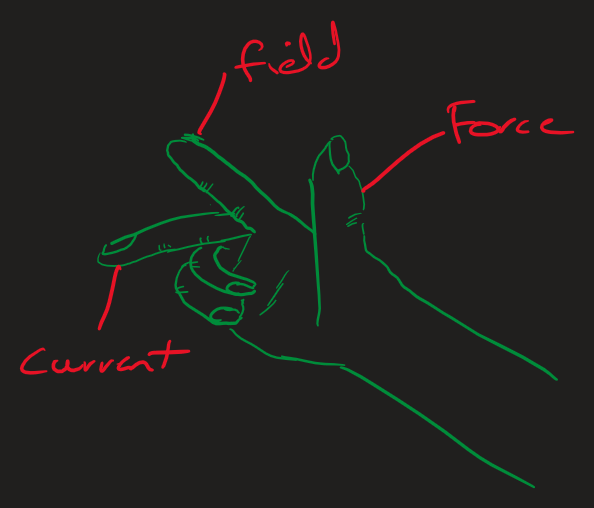Magnetic Fields
Magnets
A magnet is a ferromagnetic metal where the atoms are aligned in a way which creates a north and south pole, producing a magnetic field.
Unmagnetised ferromagnetic metals have atoms in random orientations, so the overall magnetic field of the metal gets cancelled out. They can be magnetised using another magnetic field, aligning the polarities of the atoms so they point in the same direction.
Magnetic Field Diagrams
A magnetic field diagram, similar to an electric field diagram, uses field lines to show the direction a north pole would point if placed at each position. Unlike an electric field diagram, a magnet's north and south poles must be the same strength, therefore they must have the same number of field lines.
Fleming's Right-Hand Rule
A charged particle moving perpendicularly to a magnetic field will experience a force. The direction of this force can be deduced using Fleming's right-hand rule:

- The thumb corresponds to the direction of the force acting on the particle.
- The index finger corresponds to the direction of the magnetic field lines.
- The middle finger corresponds to the direction of the flow of electric current.
The direction of current is not always the same as the direction of movement of the charged particle! If the particle is positively charged, it will be moving in the opposite direction to the direction of current.